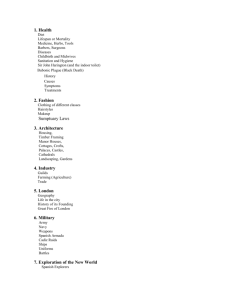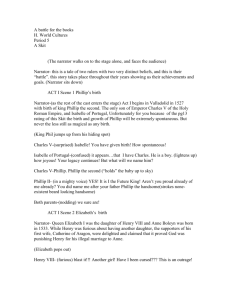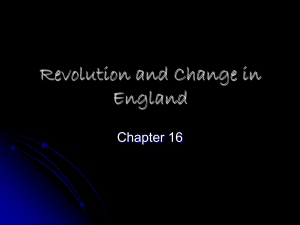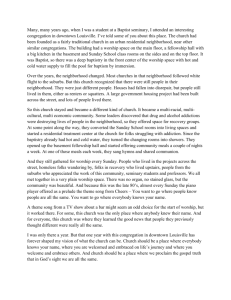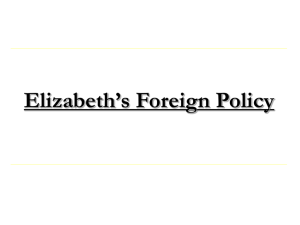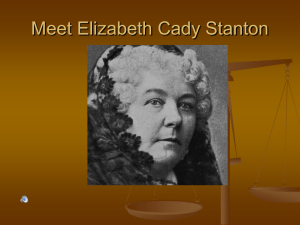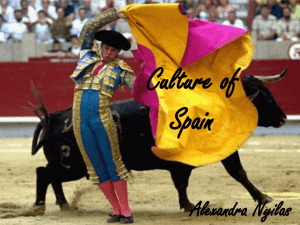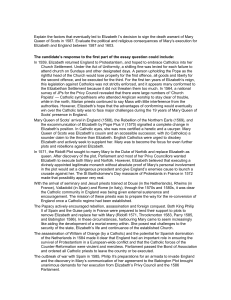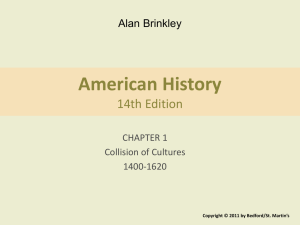Age Of Elizabeth
advertisement
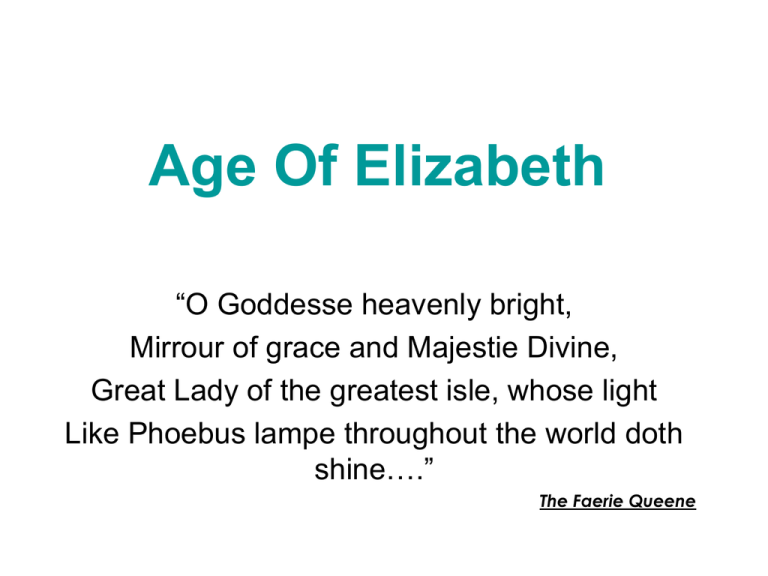
Age Of Elizabeth “O Goddesse heavenly bright, Mirrour of grace and Majestie Divine, Great Lady of the greatest isle, whose light Like Phoebus lampe throughout the world doth shine….” The Faerie Queene • • • • • • Just 25 when she came to the throne “Mere English’ (no foreign born parent) Inherited coquetry of her mother, ruthlessness of her father. Tutored by Thomas More. Cultured – spoke four languages and a good musician. Literal and figurative inspiration of the golden age of English literature and music. • • • • • Unlike Mary, satisfied need for a direct parliamentary system which was indigenous. Restored compromise church. Confirmed as head of the church and Defender of the Faith Revised Book of Common Prayer Did not persecute Catholics but still viewed them with suspiscion and distrust. • • • • • Different idea of man’s duty to society. No longer obedience to a central order (fuedalism/Rome) An obligation to the nation, patriotic, national sense of duty. New learning was influential. As was English Canon Law, King’s courts, shire representatives at parliament, new national clothing industry and, of course, new language and literature. A paradox: The Elizabethean Age was nationalistic yet also individualistic as the Tudor monarchs reduced loyalties between the individual and the state. • Concord • • • • • • • • • Elizabeth had no expansionist ambitions Shunned ideological passions Avoided dynastic marriages. Passive policies appropriate as England did not have resources to wage war. 1558, Elizabeth reestablished the supremacy of the national, non-clerical state with a national church as its servant The rest of her reign was devoted to adapting the lives of the people to this new system and defending it from within and abroad. Although England at a low ebb when Elizabeth came to the throne, Spain did not exploit it. Perhaps Philip II feared Mary, Queen of Scots more as she had married the Dauphin of France, Spain’s great one true challenger. Elizabeth and her advisors exploited this balance of power brilliantly until they were strong enough to defend themselves. Threat From Within Contained • • • • • • Politically skilfull in domestic policy also. Manipulated courtiers and personal rivals Travelled country with full entourage. Endeared herself to ALL regions unlike any other monarch before her. Created an image that everyone loved. In reality, however, she was hard and impersonal. Subverted everything for the good of the state. Religious Affairs • • • No particluar interest in religion Merrely wanted to assert her control over church business 1559 Act of Supremacy and Act of Uniformity. – – • Act of Uniformity (second-first was under Edward VI): Revised Book of Common Prayer – designed not to be offensive to the Roman Church, Elizabeth wantd to be sure that the same form of service was used throughout the land in order to prevent fragmenttation. Act of Supremacy: The monarch was the’ Supreme Governor’ of the country in all spiritual, ecclesiastical and temporal affairs. Abolished papal supremacy and restored the Church of England. The Anglican church became a pillar of the Elizabethean state. Saved England from the religious civil wars that plagued other European countries. Economic Affairs • • • Understood importance of trade and industry Trading operated by private companies Rights to conduct trade were granted for a particular area: – – – – • • • Hudson Bay Company East India Company Eastland Company Etc. Crown had all to gain and nothing to lose Internally a similar scheme was set up: Elizabeth gave charters to doemestic companies. These licences gave the holders exclusive rights to produce and/or sell certain goods. This created monopolies and much discontent. Foreign Policy • • • • • • • • Increased tensions with Spain Philip II, Widower of Mary, had colonies in America, Netherlands and southern Italy. He was also autocratic and a fervent Catholic. At this time, silver and gold were the most important economic commodities (for minting coins) Latin America was the source for these precious metals. Pope Alexander VI had split Latin America in 2, giving one half to Spain and the other to Portugal. England had no share in this lucrative trade. A cold war between England and Spain ensued for over thirty years. English privateers attacked and plundered Spanish ships with the knowledge and support of Elizabeth. Mary Queen of Scots • • • • • • • Elizabeth seen as illegitimate by Roman Catholics (Daughter of Anne Boleyn and Henry VIII) Roman Catholics believed that Mary Stuart ( a fervent catholic) was the rightful heir to the English throne. After the death of the French dauphin she married Henry Stuart. Once the dauphin had died the Spanish plotted to assassinate Elizabeth and put Mary on the throne. Many plots – all failed. Conspirators were always caught and executed except for Mary. Elizabeth was reluctant to kill her nearest living relative. In 1586, however, letters were found which implicated Mary in a plot. Parliament demanded her head and Elizabeth acquiesced. Needed to be done in order to preserve stability and safety of the monarch. The Defeat of the Spanish Armada • • • • • • • • • • War with Spain had been brewing for some time. Execution of Mary was the catalyst. As there was no longer hope to put a Catholic on the throne of England. Philip prepared to invade. 19th July 1588, 130 ships sighted off the Scilly isles. Victory at sea was vital for the English as their army was in a poor state. After 8 days, the English drove the Spanish ships from the English channel and into the North Sea. Spanish ships could not return to Spain due to the strong wind - went around Ireland and Scotland instead. Many ships lost on the rocks – stormy weather. Only 54 ships returned. Why did the English win? – – – • Motivation Technical superiority Favourable weather Defeat signaled the end of Spain as a great power and the emergence of England as a great maritime nation. Route of The Spanish Armada
